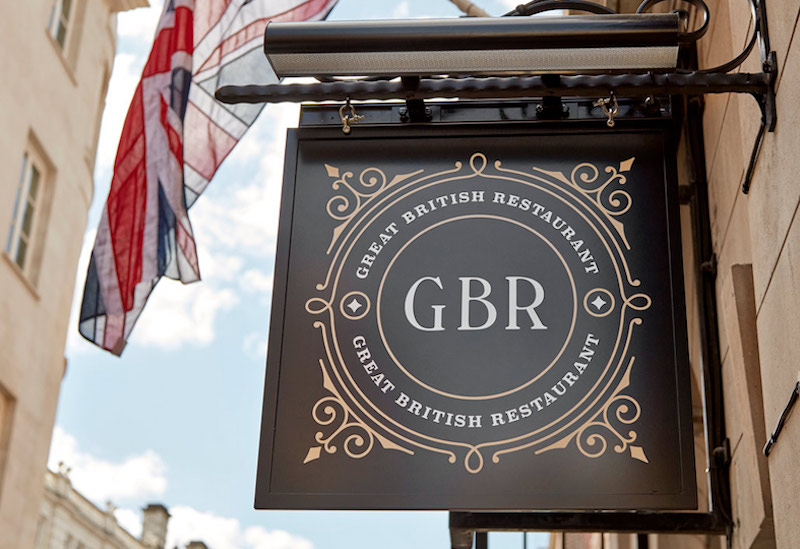
The Great British Restaurant (GBR) is the new incarnation of Thirty Six by Nigel Mendham at Dukes, London, (2011 to 2017). It has undergone a radical transformation in design and décor accompanied by the equally modern food offering of all day dining. Remodelled, with the removal of the PJ lounge corridor wall, it now features two smaller areas. Gone is the orange and cream of the traditional, conservative feel, to be replaced by a more casual yet luxurious look, featuring tones of blue, black, white and grey.
Antique mirrors, lining the low ceiling and part of the walls, increase the sense of light and space. Equally glamourous is the black granite top bar with upholstered bar stools for seven. Well-spaced granite topped tables have classic leather and velvet banquette or more traditional dining chair seating. Black and white reportage photography line the walls, evoking the hotel’s celebrated past and the guests who frequented it.
Executive head chef Nigel Mendham has now diverted from a career noted for hotel fine dining, including leading the kitchens at the Michelin starred Samling in the Lake District. This is a bold move indeed, necessitating the oversight of three services a day, seven days a week. Diversity in the main lunch and dinner menu is another prerequisite, hence the need for traditional British classics alongside more contemporary, casual and fine dining dishes. Few restaurants would offer, say, confit duck egg, duck liver parfait, fish and chips, treacle sponge and jam rolly poly on the same menu.
The carte includes six starters ranging from £5.50 to £11.50; “A taste of Spring” featuring charcuterie and smoked dishes to share, both at £16; four salads, £14.50 to £18; “Signatures” of chicken pie, GBR burger and sausage roll, £18 to £6; mains from £10 to £28 with sides at £4.50 and five desserts at £6. Overall Prices are reasonable given the quality of ingredients and the large portions. Not forgetting this is St James’s!
The drinks list avoids greedy markups. Signature cocktails are priced £2 to £14; craft beers £6 for 33cl, 13 white and 13 red wines are offered, 7 of each by the glass.
Fine Dining Guide was invited to visit for lunch in mid May, before the official opening. Restaurant manager Robert Dokler was welcoming and informative, and the service itself was well meaning, if occasionally in need of fine tuning.
Four starters were sampled.
Duck liver parfait was suitably light, smooth and deeply rich in flavour. A crisp Yorkshire pudding added a contrasting texture and proved a novel and memorable idea. A quenelle of caramelised onion, which cut the richness of the parfait, helped balance the dish.
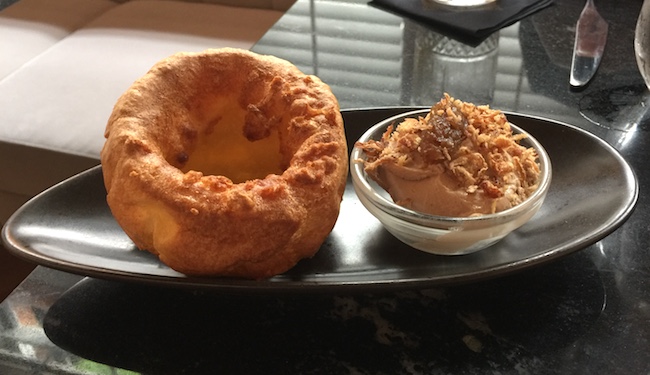
The beautifully sweet, fresh white meat of Norfolk crab was presented on a light mayonnaise. Rye bread melba toast added an element of crispness, and overall the dish worked well, although perhaps not needed was the addition of the cubes of compressed apple.
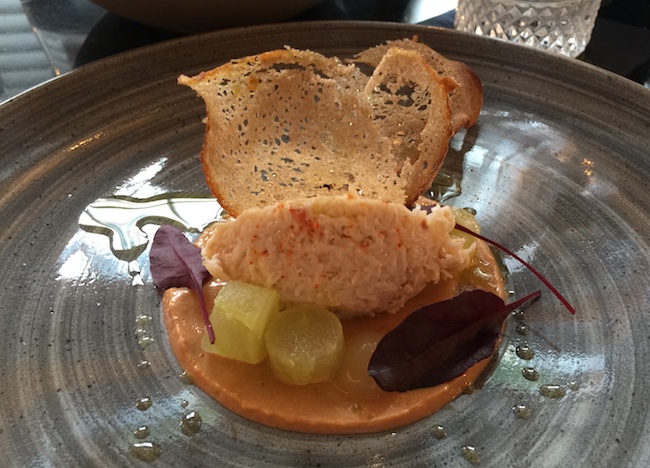
Wye valley asparagus was accurately cooked al dente. The accompanying hollandaise made this an enjoyable summer dish. The breaded quail eggs provided a pleasing combination of tastes, while to be completely satisfying, more accurate timing would have produced runnier yolks.
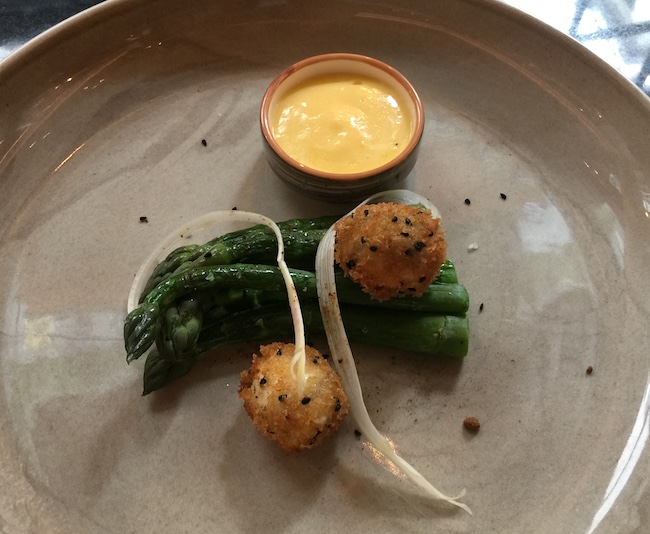
The best of the starters sampled, more suited to a fine dining menu, was the slow cooked confit duck yolk with a smooth, vibrantly flavoured pea veloute and earthy morels. This refined dish allowed the sweet and savoury elements to speak for themselves.
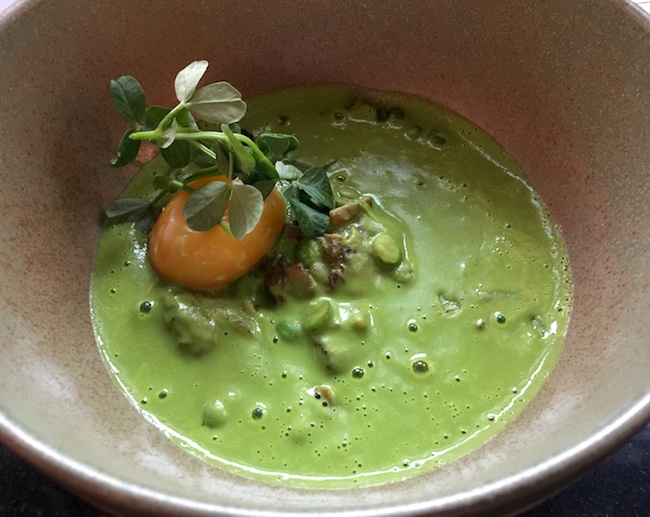
Two contrasting main courses were ordered.
Free range chicken pie had a classic filling of cubes of chicken breast in a white sauce. Generous in size – the dish was enough for two – and rustically presented, the filling perhaps needed a little more seasoning to lift it. The herbed hot suet top crust had striking flavour and with a little tweaking this will prove a popular dish with regulars.

By way of contrast, new season lamb rump was more refined, the quality of the meat was clear – packed with flavour, tender, cooked to retain its moisture and enhanced by classic garnishes of smoked aubergine, confit tomatoes and wild garlic.

Of the side dishes, triple cooked chips had the delicious, moreish quality expected from the preparation. Both the broccoli (with pancetta and almonds) and heritage carrots showed strong produce but demonstrated some cooking inconsistencies that might be expected of a pre-opening kitchen, which can easily be corrected with a sharper focus on timing.
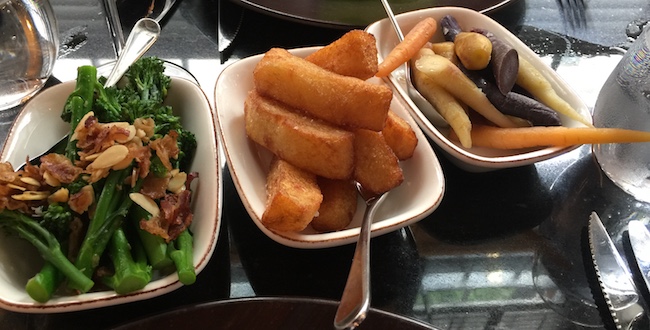
To finish, there was a refined lemon based dessert: a base of lemon curd accompanied lemon parfait, which, topped with confit lemon zest, had perfect texture and a good balance of sweetness and acidity. Lime leaf cream added extra fragrance and softer texture, contrasting also with crisp meringue shards giving a light crispness.

Yorkshire rhubarb dessert was cooked sous vide, in this case it remained too firm and stringy, the ginger crumble was well made, the rhubarb gel was not too sweet and the smooth vanilla ice cream added a contrast of temperature.
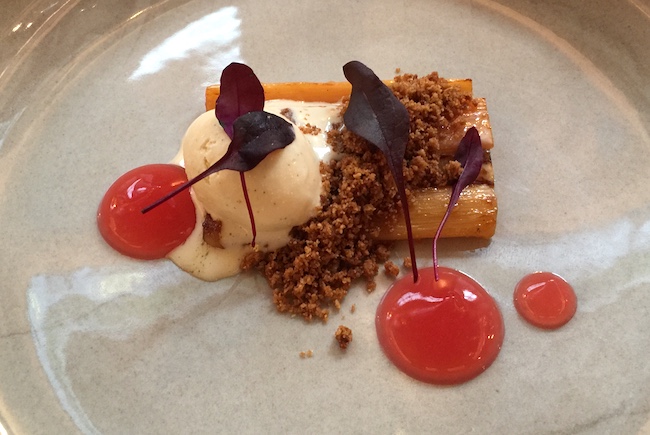
Overall, this was a lunch of highs and lows, but it must be remembered the visit was in a period of pre-opening, during which inconsistencies are identified and ironed out. This bold new venture deserves success, and, given the reputation of the chef and hotel, these are likely to be rectified sooner rather than later. Fine Dining Guide will follow the GBR’s progress with interest.



